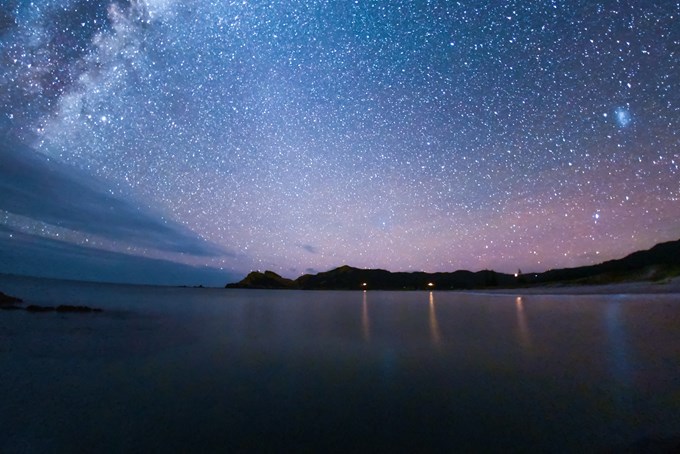The world’s only island Dark Sky Sanctuary, Aotea/Great Barrier Island, is leveraging its star power to celebrate Matariki with a month-long festival.
The Matariki Festival will run from June 29 until July 31, with a range of events including art exhibitions, photography workshops, rocket making, astronomy talks, star gazing, moon dancing and a twilight ball.
Closing out the festival is the chance to see Mars at its brightest and closest since 2003, with Great Barrier’s pristine night sky making it one of the best places on Earth to get a glimpse.
Becoming an International Dark Sky Sanctuary
Since being designated an International Dark Sky Sanctuary in June last year the island has fully embraced the status and as result has been attracting astro-tourists from all around the world.
Gendie Somerville-Ryan, one of the Great Barrier residents responsible for applying to the International Dark Sky Association, is also part of the driving forces behind the Matariki Festival.
“We want to get the word out that the island is a fantastic place to visit in winter. In fact, with the shorter days you don’t need to stay up so late to see the starry nights,” she says.
“With the island’s International Dark Sky Sanctuary status, it seemed like the perfect idea to create a star festival around Matariki. It’s an ambitious programme but this is the Barrier!”
While the island has traditionally been a popular summer destination, in the winter months visitor numbers drop significantly. Part of the rationale for applying for Dark Sky status was to not only protect the night sky from light pollution for future generations but also be an opportunity for growing the local economy by attracting more visitors.
Guided stargazing tours
Hilde Hoven, who set up tourism business, Good Heavens, with two other locals – Orla Cumisky and Deborah Kilgallon – to provide visitors guided star gazing tours is also taking part in the festival programme.
“We are thrilled to be taking part in the festival and giving people a close encounter with Mars which is one of the closest it's been to Earth in 60,000 years with the exception of 2003 when it was closer still,” she says.
“Since we started Good Heavens we’ve been introducing visitors to the stunning night sky, and we continue to get an absolute buzz out of people’s reactions when they see the stars and planets up close for the first time.”
What to look forward to
Great Barrier Local Board Chair Izzy Fordham continues to be amazed at how successful the new sanctuary status has proven for the island and is looking forward to events taking place throughout Matariki.
“Ecotourism is extremely important to Great Barrier Island and the Aotea/Great Barrier Island International Dark Sky Sanctuary status is already attracting more visitors, and more money to the island,” she says.
“We’ve got Aerospace Education bringing a team of educators to teach people how to make their own rockets, and Stardome Astronomer, Grant Christie, coming over to show people how to make a sundial with recycled products and show people the planets and constellations in the night sky along.
“Sessions will be run by astronomer Nalayini Davies who will show people the pathfinder stars used for navigation.”
There are also opportunities for amateur astronomers or those interested in space to build their skills – how to measure how dark the sky is at their own place; a nightscape photography workshop; and a beginner’s astronomy course.
Auckland Tourism, Events & Economic Development General Manager, Destination, Steve Armitage, says, “It’s fantastic to see the collaboration continuing on Great Barrier Island with a passionate bunch of people working together to make the island a year-round destination.
“This is what we want to keep fostering as we achieve the actions outlined in Auckland’s new Destination AKL 2025. It’s important that we continue to attract visitors, create new jobs and amenities that benefit locals and visitors – but with this growth comes responsibility.
“Great Barrier Island is a great example of a successful approach towards destination management, and what has resulted is an ecotourism attraction that is helping grow the economy in a sustainable way.”


